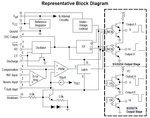goldsmith
Advanced Member level 6
- Joined
- Dec 14, 2010
- Messages
- 3,981
- Helped
- 741
- Reputation
- 1,486
- Reaction score
- 726
- Trophy points
- 1,413
- Location
- Tehran - IRAN
- Activity points
- 24,546
Hi Gary
If you use a mosfet that has an internally diode , it can handle your aim as well . i.e if your mosfet has not any internally diode , you can connect it externally !
I'm a bit confused that what you want to do exactly . because you talked about SG3526 . it is a complete driver ! are you trying an SMPS ?
Best Wishes
Goldsmith
If you use a mosfet that has an internally diode , it can handle your aim as well . i.e if your mosfet has not any internally diode , you can connect it externally !
I'm a bit confused that what you want to do exactly . because you talked about SG3526 . it is a complete driver ! are you trying an SMPS ?
Best Wishes
Goldsmith
